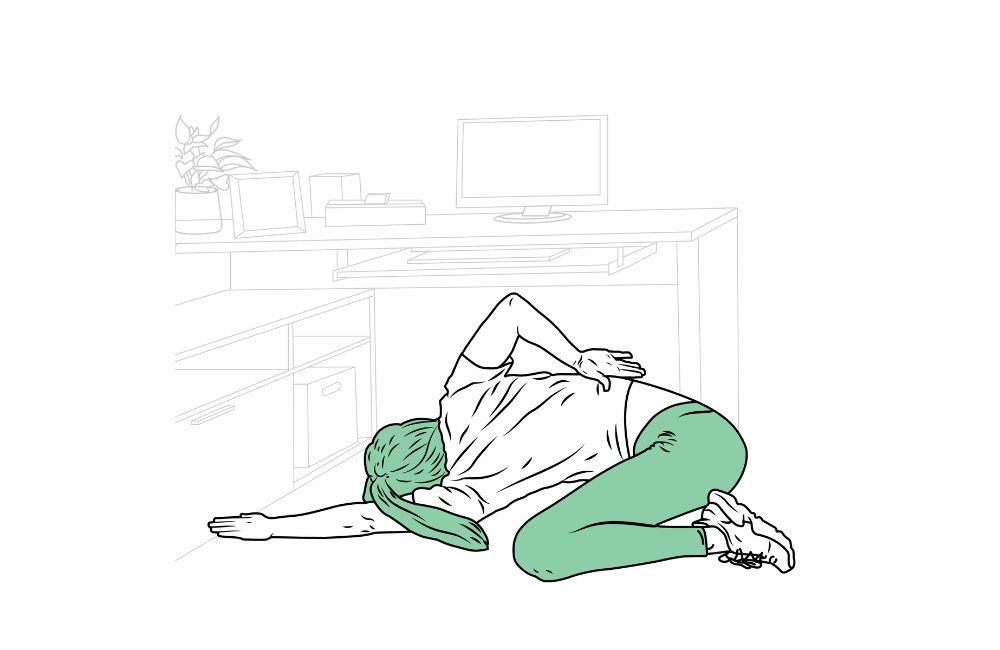
Five exercises to stretch your hunched shoulders and spine after prolonged sitting. These exercises will enhance spinal mobility, flexibility, and posture correction.
For many of us, prolonged sitting is a common part of our daily routine. While there’s nothing inherently wrong with resting, excessive sitting often leads to stiffness and spinal discomfort (1).
However, when we do too much of it, we often develop stiffness and pain in our spines.
Fortunately, there’s a simple remedy: exercise!
Regularly incorporating exercises to counteract the effects of sitting can significantly alleviate and prevent spinal pain (2).
In this article, I’ll introduce some of the most effective exercises for maintaining spinal flexibility in a sedentary world.
How to Stretch Your Spine After Sitting All Day
You’ll also like:
- Bulletproof Your Body As You Age With These 3 Exercises, Says a PT
- Want to Age Well? Do These 5 Exercises To Strengthen Your Deep Spinal Stabilizer Muscles and Improve Posture
1. Angular Child’s Pose

This modification of child’s pose is a great choice for people with stiff backs. By adding a slight rotational component to this movement, you can really take this stretch to another level.
How to Perform
- Start on your hands and knees, with your knees below your hips and your hands below your shoulders.
- Then, reach your left hand forward and slightly to the right as you simultaneously sit back on your heels.
- You should feel a stretch in your left lats and low back area.
- Hold this position for 30 seconds and repeat 4 times on each side per session.
2. Seated Extensions
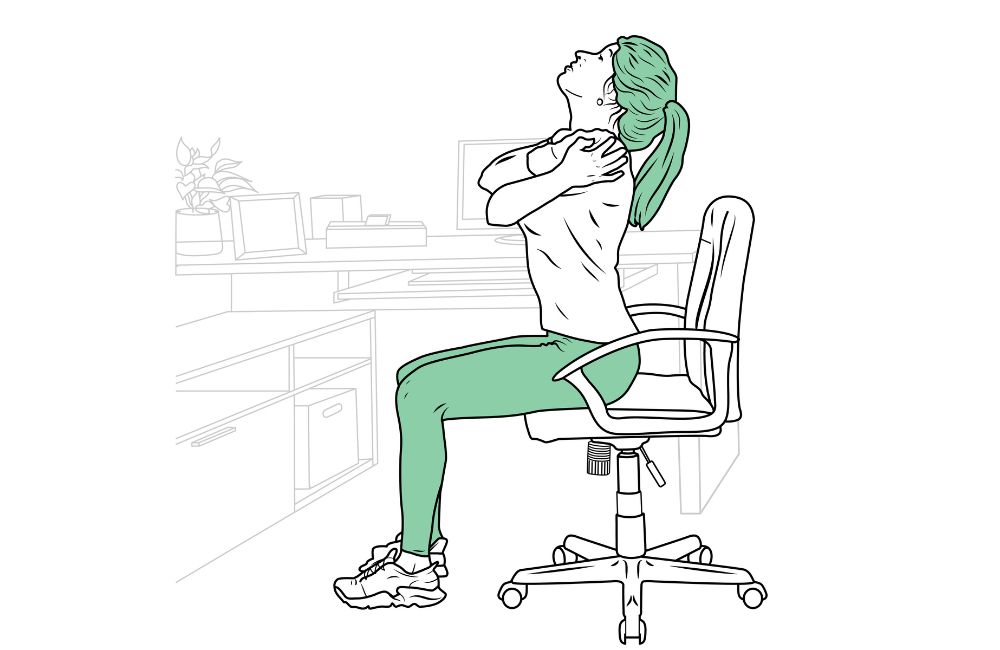
Seated extensions feel great for the whole body. Best of all, they can be easily performed while you sit at your desk!
How to Perform
- In a seated position, cross your arms over your chest, or lace your fingers behind your head.
- Extend backward as far as you can, looking up at the ceiling.
- Hold this stretch for 30 seconds and repeat 4 times per session
3. Spine Foam Rolling
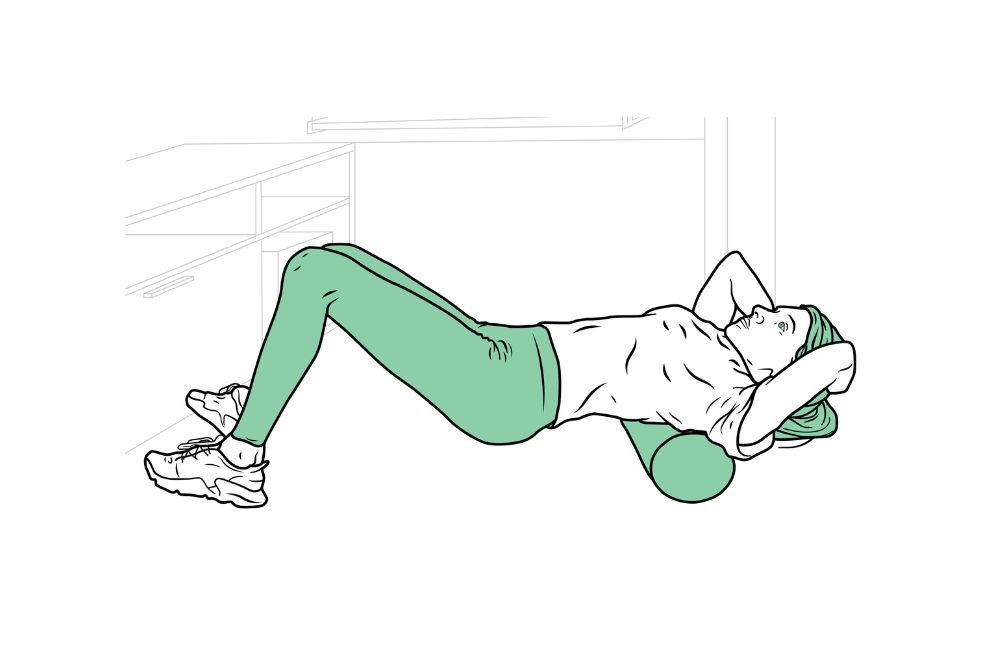
Foam rollers have become enormously popular over the past few years. This simple tool can help to open up the spine while releasing tight tissues. In fact, foam rolling can act like a self-massage, when it’s done correctly.
How to Perform
- Place the foam roller on the floor and lie down on it, placing your mid back on the middle of the roller.
- Next, use your legs to pick your hips up off of the ground, and push yourself forward and backward on the roller, creating a massage effect throughout your back.
- Perform 30 “rolls” per session.
4. Seated Upper Back Flexion Test
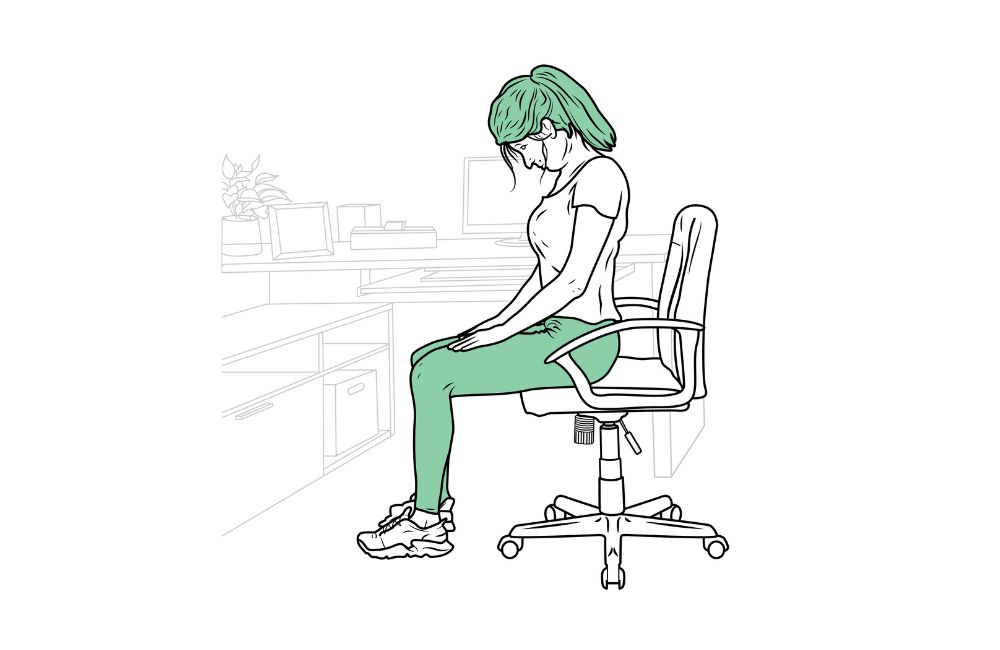
This stretch is a complement to the seated extension stretch. By pairing these two stretches together, you can stretch many of the major muscles of your upper back and neck.
How to Perform
- Start in a seated position, with your back straight.
- Next, bend your chin to your chest and let your upper back bend forward as well.
- Hold this position for 30 seconds and repeat 4 times.
5. Cat-Camel
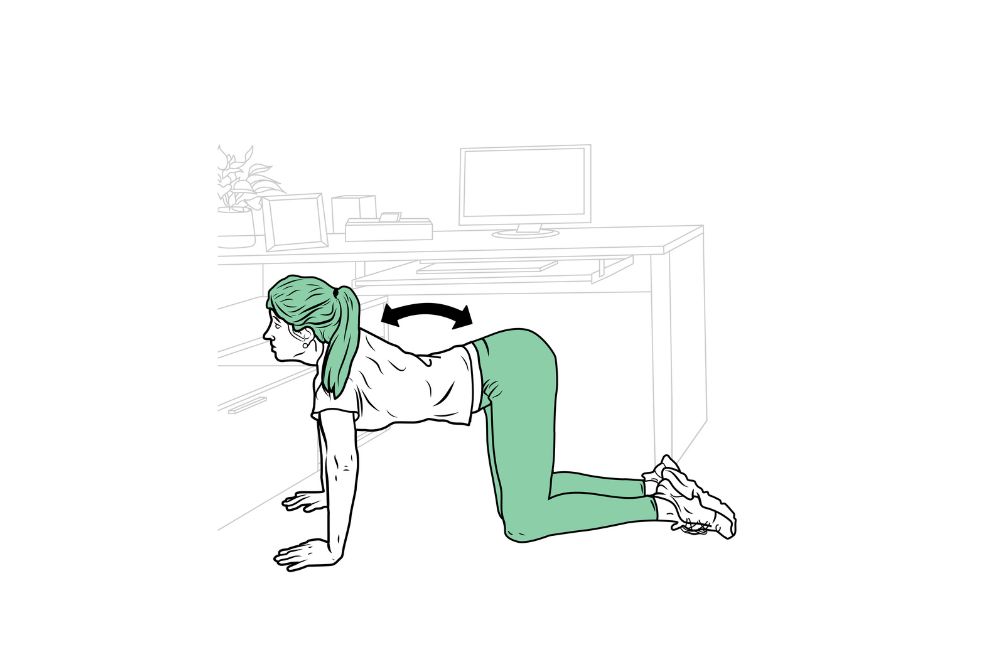
The cat-camel, also known as the cat-cow, is another quintessential yoga pose. This move is one of the best there is for improving thoracic spine mobility.
How to Perform
- Place your hands and knees on the floor to start.
- Next, allow your stomach to sag toward the floor as you extend your neck and look forward.
- Then, reverse these positions, arching your back and tucking your chin to your chest.
- Hold each of these positions for 30 seconds, and repeat 4 times per pose.
Putting It All Together
These five exercises are non-fatiguing flexibility movements. Therefore, you can safely perform all of them every day, if you’d like.
However, I recommend that you complete them 5 days a week, taking the weekends off. This way, you can make sure that you counteract the effects of sitting while you’re at work, without having to perform the moves every single day.
Try this routine out for a few weeks and see how you feel!
Works Cited
- Keadle, S. K., Conroy, D. E., Buman, M. P., Dunstan, D. W., & Matthews, C. E. (2017). Targeting Reductions in Sitting Time to Increase Physical Activity and Improve Health. Medicine and science in sports and exercise, 49(8), 1572–1582. https://doi.org/10.1249/MSS.0000000000001257
- Gordon, R., & Bloxham, S. (2016). A Systematic Review of the Effects of Exercise and Physical Activity on Non-Specific Chronic Low Back Pain. Healthcare (Basel, Switzerland), 4(2), 22. https://doi.org/10.3390/healthcare4020022


